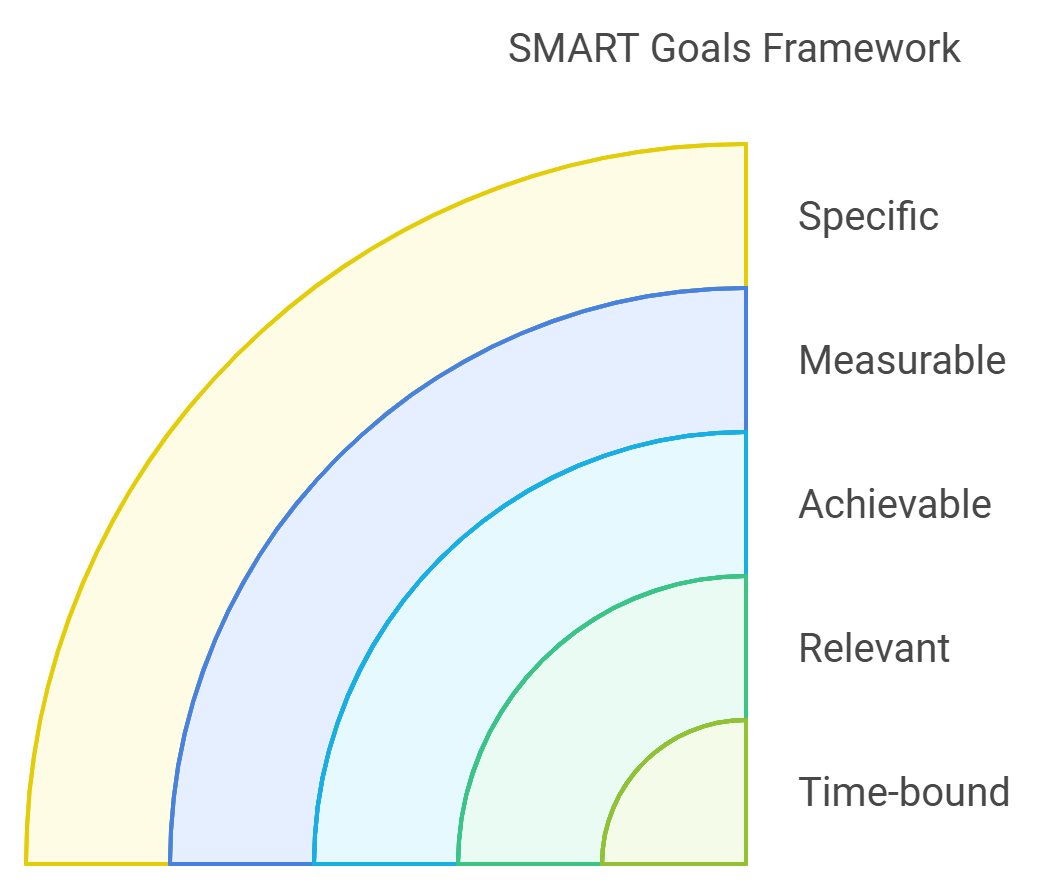Imagine you’re running a small business, juggling everything from product development to customer service. You’ve got big dreams for growth, but every new step seems to add layers of complexity. You can’t find the proper way to your business growth. Don’t worry, you’re not alone most business owners feel the same way.
In fact, only 50% of small businesses make it past the five-year mark, often due to a lack of strategic planning and resources to scale sustainably. That’s where having a clear, effective growth strategy can make all the difference.
In this article, we’ll walk you through practical, proven strategies to help your business grow confidently and sustainably. From setting clear goals to leveraging technology, optimizing marketing, and managing finances, each section is designed to give you simple tools to build a thriving business.
Effective Strategies for Business Growth
Expanding a business is no small feat; it takes a blend of planning, strategic choices, and a commitment to building customer trust and engagement. The following core strategies will help guide your business toward scalable, sustainable growth by increasing efficiency, building loyal customer relationships, and making impactful decisions.
Develop a Clear Vision and Set SMART Goals
A clear vision acts like a roadmap, guiding your business’s direction and uniting your team’s efforts. With a strong vision in place, every action and decision aligns with long-term goals, keeping the team focused and avoiding unnecessary detours. But vision alone won’t fuel growth. You need actionable goals to bring it to life.
Setting SMART goalsSpecific, Measurable, Achievable, Relevant, and Time-bound turns your vision into a series of clear, trackable steps.
For instance, if your goal is to increase sales by 25% over the next year, a SMART approach could involve aiming for a 2% sales boost each quarter by launching a customer referral program and refining digital marketing efforts. This structure lets you monitor progress, make adjustments along the way, and ensure every step brings you closer to your vision.
By defining a clear vision and breaking it down into achievable goals, you can maintain momentum, focus, and measurable growth. This strategy provides direction and enables your business to adapt and progress confidently.

Understand Your Market and Audience
Knowing your market and audience is essential for business growth. When you understand your customers’ needs and preferences, you can create products or services that directly address their interests. This focus not only attracts more buyers but also increases customer loyalty, as people feel more connected to brands that “get” them.
For example, if your audience values eco-friendly options, offering sustainable products can set your brand apart, making you the go-to choice for these customers. This alignment helps you gain a loyal following and can even boost word-of-mouth referrals as satisfied customers recommend your brand to others.
With customer insights, you can also make smarter marketing and inventory decisions. By focusing on what your audience truly wants, you avoid spending on campaigns that won’t hit the mark, saving resources and increasing efficiency. In turn, this enables steady growth, as you attract repeat customers and improve your brand reputation.
Leverage Technology and Innovation
In today’s rapidly evolving market, technology is essential for staying competitive and driving growth. Utilizing AI-driven customer insights allows businesses to better predict customer needs, creating more personalized marketing experiences that increase customer loyalty. Automation tools, such as CRM systems, take over repetitive tasks, giving employees the time to focus on high-impact strategies.
Cloud-based solutions strengthen team collaboration, especially in remote work environments, while e-commerce platforms and integrated payment systems make purchasing easier, increasing conversion rates. Machine learning and predictive analytics provide insight into market trends, helping businesses quickly adapt and maintain a competitive edge.
For example, consider how online retailers use AI to suggest products based on browsing history. This personalized shopping experience can increase sales and customer satisfaction by showing people exactly what they’re interested in. Investing in the right tech tools, whether for customer service, data management, or marketing, can transform your operations and drive growth faster than manual methods alone.
By investing in the right technology, companies can increase productivity, make smarter decisions, and achieve sustainable growth even during uncertain times.
Optimize Marketing Strategies
In today’s digital landscape, effective marketing is like an ongoing conversation. To connect with customers wherever they are, you need to be present across multiple channels.
A multi-channel approach, one that includes social media, search engine optimization (SEO), and content marketing, broadens your brand’s reach and attracts a diverse range of customers. Consider a business that increased its online visibility by posting expert insights through blog content, engaging followers with daily tips on Instagram, and running targeted Google Ads to capture high-intent search traffic. This combination built strong brand recognition, brought in new customers, and kept the current audience engaged.
By using these channels together, you amplify your message and connect with customers in a way that’s both effective and sustainable.
Strengthen Customer Relationships
Customer loyalty can be the difference between steady growth and unpredictable sales. Strengthening relationships means consistently delivering positive experiences that keep customers coming back. Customer satisfaction and loyalty programs, like rewards for repeat purchases, show appreciation and encourage continued business.
A simple approach, such as asking for feedback after a sale and making improvements based on their input, can make customers feel valued. Think of each interaction as building trust; the more consistently positive experiences you create, the stronger the bond becomes. This way, your business becomes the brand they trust and recommend.
Diversify Revenue Streams
Relying on a single revenue source is a bit like putting all your eggs in one basket if one stream falters, the whole business feels the impact. Diversifying means introducing new products or services, targeting different customer segments, or even exploring partnerships to create steady, reliable income.
Consider a coffee shop that starts selling branded mugs, coffee beans, and brewing kits in addition to coffee. These extra revenue streams add security and reduce dependence on foot traffic alone, making the business more resilient to market shifts. A diverse income mix not only enhances stability but also opens doors for new opportunities.
Build a Strong Team
A business grows stronger when it has a dedicated, skilled team behind it. Hiring people who believe in your vision and nurturing a culture of collaboration and growth can significantly boost overall performance. By investing in training, mentorship, and leadership development, you’re not only enhancing individual skills but also creating a motivated team ready to tackle challenges and find solutions.
Imagine a team that sees each challenge as a chance to innovate this mindset leads to continuous improvement and a culture of resilience. Supporting your team’s growth doesn’t just help them as individuals; it strengthens your business as a whole. A skilled, engaged team adapts quickly to market changes, identifies new opportunities, and drives sustained business growth.
Financial Planning and Management
Having a clear financial strategy is essential to growing your business confidently and sustainably. Without careful cash flow management, accessible funding, and smart forecasting, even the best-laid growth plans can lose momentum. Let’s break down these key financial practices to help build a foundation for stable, scalable growth.
Importance of Cash Flow Management
Think of cash flow as your business’s fuel when it’s steady, you can keep everything running smoothly, cover expenses, and invest in growth. Cash flow management simply means keeping track of what comes in and what goes out, ensuring there’s enough to cover costs and take advantage of new opportunities.
Consider a seasonal business, like an ice cream shop that sees booming sales in the summer and a slower winter season. With solid cash flow planning, the shop can prepare for these ups and downs by saving during peak months to cover costs when business slows. Effective cash flow keeps your business prepared, stable, and flexible enough to take advantage of new opportunities without unnecessary stress.
Securing Funding for Expansion
When it’s time to scale, extra resources are often essential. Whether you want to open a new location, add a product line, or expand your team, securing the right funding can give you the boost to grow without risking your cash flow.
Here are common funding options:
- Investors: By partnering with investors, you gain funds and often valuable expertise, though it may mean sharing profits or decisions.
- Loans: Business loans give you capital upfront with the benefit of maintaining ownership, while repaying the debt over time.
- Grants: These are often available for businesses focusing on innovation or sustainability, providing funds without repayment obligations.
Each option brings unique benefits and trade-offs, so choose what aligns best with your goals. Some businesses find that a balanced mix of these sources allows them to stay in control while still securing the cash needed to grow.
Financial Forecasting
Financial forecasting is like peeking into the future of your business. By estimating future income and expenses, you can plan for opportunities and challenges before they even appear. Tools like budgeting software, spreadsheets, or specialized forecasting apps help you map out “what-if” scenarios, guiding smarter, more proactive decisions.
Imagine a small restaurant planning to open a second location. Using financial forecasts, the owner can project costs for rent, staff, and supplies, balanced against expected revenue. This way, they can confidently decide if expanding now makes sense or if they should hold off. Forecasting helps keep growth manageable, reducing surprises and boosting confidence that each step is financially sound.
Successful financial planning doesn’t just keep the lights on; it powers the growth you’re aiming for. By staying on top of cash flow, exploring the right funding sources, and using forecasting tools, you build a financial backbone that supports lasting success. If you’re ready to take your business to the next level, exploring these strategies can help you lay a strong foundation for steady growth and resilience.
Monitoring and Adapting Strategies
Growing a business successfully means staying alert and flexible. Instead of setting goals and leaving them unchecked, smart businesses regularly monitor their progress and make adjustments when needed. Using Key Performance Indicators (KPIs) and adapting strategies based on data are essential steps to keep your business strong and responsive to change.
Importance of KPIs
Think of KPIs as your business’s “health report.” They’re metrics that give you insight into important areas, such as sales, customer satisfaction, and operational efficiency. Tracking KPIs helps you understand how well your efforts are paying off and where improvements might be needed.
For instance:
- Sales KPIs could include monthly revenue, conversion rates, and average transaction value, giving you a clear picture of growth trends.
- Customer Satisfaction KPIs like Customer Retention Rate or Net Promoter Score (NPS) help gauge how well you’re meeting customer needs.
- Operational Efficiency KPIs such as order fulfillment speed or production costs reveal areas where operations might be fine-tuned.
With these measures, you can quickly spot successes or address areas that need attention, allowing you to make informed decisions without guesswork.
Adapting Strategies Based on Data
Flexibility is key to business resilience, and data-driven decisions give you the confidence to make shifts without risking stability. When you analyze real-time data, you’re able to spot trends, understand customer preferences, and adjust accordingly.
Consider Netflix as a leading example. Starting as a DVD rental service, they noticed viewers’ interest in streaming digital content. Rather than sticking to DVDs, they invested in streaming, using data insights to predict viewer habits and preferences. This shift allowed them to stay ahead and lead the entertainment industry.

In your business, adapting based on data could mean refining a product based on customer feedback, adjusting a marketing strategy, or streamlining operations. By staying flexible and open to change, you keep your business agile, able to grow and adapt in a changing market.
Monitoring and adapting strategies build a solid, responsive foundation for growth. By tracking KPIs and using data to make proactive changes, you create a business that not only grows but stays relevant. This approach keeps you prepared for shifts and lets you confidently explore new opportunities. To keep your business thriving, consider implementing these strategies and revisiting them regularly.
Conclusion
Achieving sustainable growth in business doesn’t happen by chance; it requires clear strategies, smart decision-making, and a focus on what matters most. By setting a clear vision, understanding your market, leveraging technology, optimizing marketing efforts, and building strong customer relationships, you create a foundation for lasting success. Financial planning and regular monitoring further support this growth, helping you make informed adjustments and stay on course.
Each of these strategies builds on the next, creating a roadmap for steady progress and resilience. Whether you’re strengthening your team, diversifying revenue streams, or using data to adapt to changes, these actions work together to support your goals and help your business thrive, even in challenging times. With a structured approach, you’re not just growing you’re setting up for sustained success.
FAQs
What Are the Most Effective Strategies for Business Growth?
The most effective growth strategies include diversifying product lines, expanding into new markets, building strong customer relationships, leveraging digital marketing, and optimizing operations for efficiency. Focusing on customer feedback and innovation also helps businesses stay competitive and meet changing market demands.
How Can Technology Aid in Business Expansion?
Technology accelerates business growth by automating operations, enhancing customer engagement through digital platforms, and providing data insights for informed decision-making. Tools like CRM systems, AI-driven analytics, and e-commerce platforms make it easier to reach and serve a broader audience efficiently.
How Do I Identify Growth Opportunities?
Identify growth opportunities by analyzing market trends, understanding customer needs, evaluating competitor performance, and assessing internal strengths. Regularly reviewing industry shifts and customer feedback helps uncover areas where the business can expand, innovate, or improve for increased market share.





